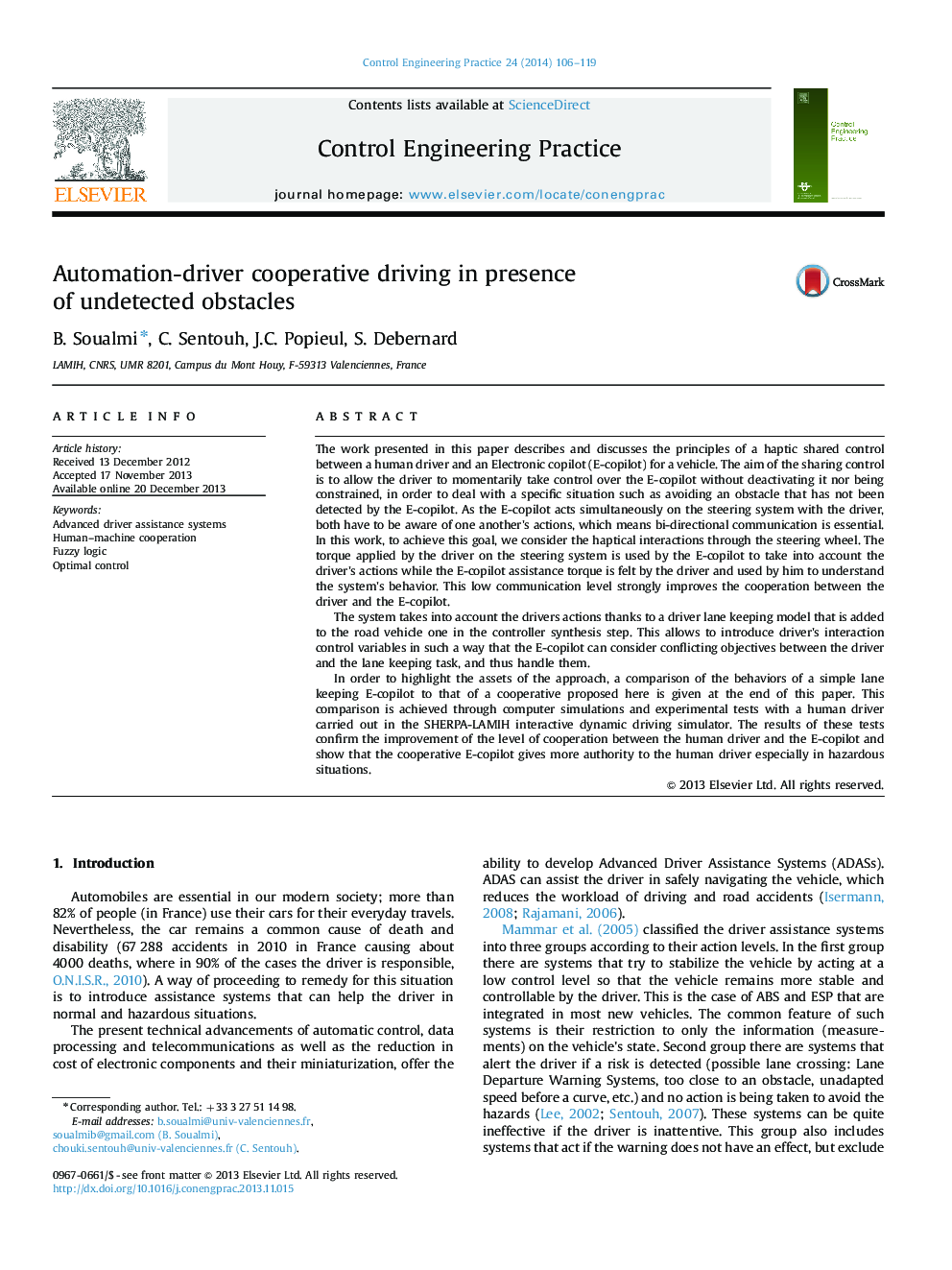| کد مقاله | کد نشریه | سال انتشار | مقاله انگلیسی | نسخه تمام متن |
|---|---|---|---|---|
| 700102 | 1460722 | 2014 | 14 صفحه PDF | دانلود رایگان |
• A haptical shared control is discussed.
• The driver is considered to develop a driver assistance system through his/her torque.
• The cooperation between the driver and the E-copilot is strongly improved.
• The proposed approach is tested with a human driver in a dynamic driving simulator.
The work presented in this paper describes and discusses the principles of a haptic shared control between a human driver and an Electronic copilot (E-copilot) for a vehicle. The aim of the sharing control is to allow the driver to momentarily take control over the E-copilot without deactivating it nor being constrained, in order to deal with a specific situation such as avoiding an obstacle that has not been detected by the E-copilot. As the E-copilot acts simultaneously on the steering system with the driver, both have to be aware of one another's actions, which means bi-directional communication is essential. In this work, to achieve this goal, we consider the haptical interactions through the steering wheel. The torque applied by the driver on the steering system is used by the E-copilot to take into account the driver's actions while the E-copilot assistance torque is felt by the driver and used by him to understand the system's behavior. This low communication level strongly improves the cooperation between the driver and the E-copilot.The system takes into account the drivers actions thanks to a driver lane keeping model that is added to the road vehicle one in the controller synthesis step. This allows to introduce driver's interaction control variables in such a way that the E-copilot can consider conflicting objectives between the driver and the lane keeping task, and thus handle them.In order to highlight the assets of the approach, a comparison of the behaviors of a simple lane keeping E-copilot to that of a cooperative proposed here is given at the end of this paper. This comparison is achieved through computer simulations and experimental tests with a human driver carried out in the SHERPA-LAMIH interactive dynamic driving simulator. The results of these tests confirm the improvement of the level of cooperation between the human driver and the E-copilot and show that the cooperative E-copilot gives more authority to the human driver especially in hazardous situations.
Journal: Control Engineering Practice - Volume 24, March 2014, Pages 106–119
